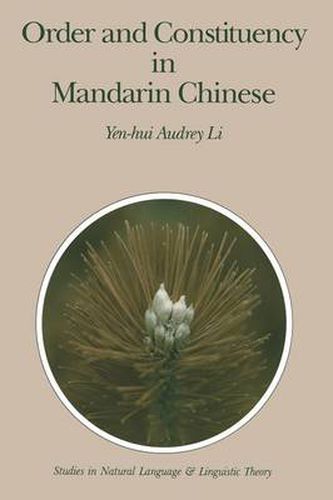Readings Newsletter
Become a Readings Member to make your shopping experience even easier.
Sign in or sign up for free!
You’re not far away from qualifying for FREE standard shipping within Australia
You’ve qualified for FREE standard shipping within Australia
The cart is loading…






This title is printed to order. This book may have been self-published. If so, we cannot guarantee the quality of the content. In the main most books will have gone through the editing process however some may not. We therefore suggest that you be aware of this before ordering this book. If in doubt check either the author or publisher’s details as we are unable to accept any returns unless they are faulty. Please contact us if you have any questions.
Recent developments in generative grammar have been very stimulating. The current theory defines a small set of principles that apply to all human languages. Efforts have been made to demonstrate the adequacy of this theory for a wide range of languages. We thus see an interesting interface of theory and empirical data: the study of natural languages contributes to defining the properties of Universal Grammar and the predictions of the theory help in uncovering generalizations regarding natural languages. This book aims to add to this exciting development by showing how the analysis of Mandarin Chinese constituent structures helps to define Case Theory and how interesting generalizations concerning Chinese grammar are uncovered through verification of the theoretical predictions. Starting from the inadequacy of work by Koopman, Li, and Travis on the effect of Case directionality on word order, the book shows that a detailed study of Chinese constituent structures allows us to reduce the phrase structure component to a minimal statement concerning the position of the head in a given phrase. It argues that in a given language the constituent structures can be adequately captured by the interaction of Case Theory, Theta Theory, Government Theory, and X Theory. Long standing controversies concerning Chinese basic word order are resolved by showing that underlying word order generalizations can differ from surface word order generalizations.
$9.00 standard shipping within Australia
FREE standard shipping within Australia for orders over $100.00
Express & International shipping calculated at checkout
This title is printed to order. This book may have been self-published. If so, we cannot guarantee the quality of the content. In the main most books will have gone through the editing process however some may not. We therefore suggest that you be aware of this before ordering this book. If in doubt check either the author or publisher’s details as we are unable to accept any returns unless they are faulty. Please contact us if you have any questions.
Recent developments in generative grammar have been very stimulating. The current theory defines a small set of principles that apply to all human languages. Efforts have been made to demonstrate the adequacy of this theory for a wide range of languages. We thus see an interesting interface of theory and empirical data: the study of natural languages contributes to defining the properties of Universal Grammar and the predictions of the theory help in uncovering generalizations regarding natural languages. This book aims to add to this exciting development by showing how the analysis of Mandarin Chinese constituent structures helps to define Case Theory and how interesting generalizations concerning Chinese grammar are uncovered through verification of the theoretical predictions. Starting from the inadequacy of work by Koopman, Li, and Travis on the effect of Case directionality on word order, the book shows that a detailed study of Chinese constituent structures allows us to reduce the phrase structure component to a minimal statement concerning the position of the head in a given phrase. It argues that in a given language the constituent structures can be adequately captured by the interaction of Case Theory, Theta Theory, Government Theory, and X Theory. Long standing controversies concerning Chinese basic word order are resolved by showing that underlying word order generalizations can differ from surface word order generalizations.